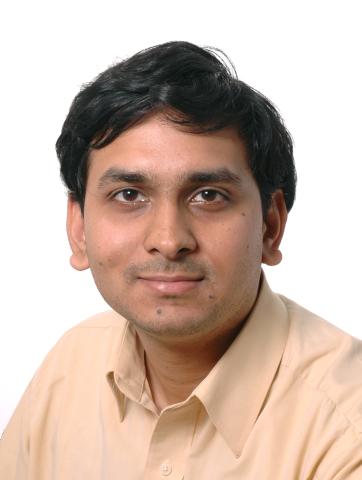event
Microfabricated Electro-Acoustic Biosensors - A seminar with Dr. Ashwin A. Seshia
Primary tabs
Microfabricated chemical and biological sensors are being developed to address technical challenges associated with detection sensitivity, sample and reagent handling, portability and cost, particularly for emerging point-of-care diagnostic and clinical monitoring applications with a view towards shifting the testing burden from centralised laboratories to the patient bedside. A number of biological and chemical sensing principles have been realized at the micro-scale; however miniaturization also provides opportunities to enhance detection sensitivities associated with a certain subset of these principles due to beneficial scaling characteristics. In recent years, micromechanical resonators have been advanced as highly sensitive mass sensors with scaled sensitivities directly benefiting from miniaturization, and have received great interest due to the potential for integration with electronics and microfluidic handling for multiplexed parallel electrical detection of target analyte in a label-free format. However, existing approaches are often limited by differences in the requirements associated with electrical signal transduction and optimization of the sensing environment. Additionally, the sensors often respond similarly to specific and non-specific surface adsorbents and rely significantly on accurate chemical definition of the surface for specificity. This talk will describe electro-acoustic approaches to biosensing developed in our group that leverage the dynamics of coupled acoustic devices and non-linear systems to address these challenges: (i) a MEMS-based dual resonator platform where the mechanical coupling of two resonators allows for the spatial separation of sensing and transduction regions, overcoming some of the existing challenges associated with direct electrical interfacing of MEMS devices operating in aqueous environments, and (ii) the anharmonic detection technique where the non-linear response of a chemically functionalised electro-mechanical oscillator provides an additional level of mechanical selectivity for the sensing of biological analyte.
Ashwin A. Seshia received his BTech in Engineering Physics in 1996 from IIT Bombay, MS and PhD degrees in Electrical Engineering and Computer Sciences from the University of California, Berkeley in 1999 and 2002 respectively, and the MA from the University of Cambridge in 2008. During his time at the University of California, Berkeley, he was affiliated with the Berkeley Sensor & Actuator Center. He joined the faculty of the Engineering Department at the University of Cambridge in October 2002 where he is presently a Reader in Microsystems Technology and a Fellow of Queens' College. Ashwin's research explores structural dynamics and physical acoustics at the MEMS-scale with specific contributions in the areas of sensors and sensor systems, transducers and interfaces, vibrational energy harvesting and micromechanical resonators and oscillators. Dr Seshia serves on the technical program committees of the IEEE Frequency Control Symposium and the European Time and Frequency Forum and the editorial boards of the IEEE/ASME Journal of MicroElectroMechanical Systems and the IEEE Transactions on Ultrasonics, Ferroelectrics and Frequency Control.
Status
- Workflow Status:Published
- Created By:Christa Ernst
- Created:10/16/2013
- Modified By:Fletcher Moore
- Modified:10/07/2016
Categories

